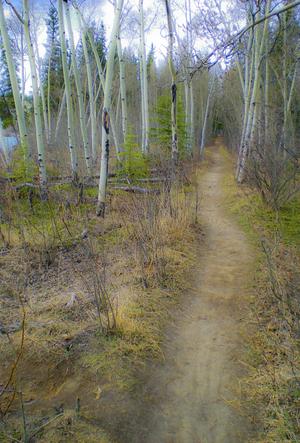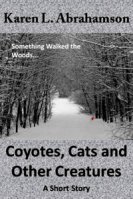Great Expectations: Cats and Readers
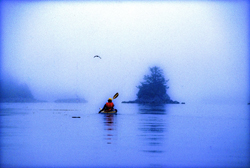
This past week I was supposed to be on the coast of Oregon with a group of writers learning about marketing books to bookstores. I was really looking forward to the trip and being with a group of great friends. I had everything packed and ready to be loaded into my car. My cats were primed and ready to for the trip. (They always travel with me, and the hotel where I stay at has known these boys since they were babies—it’s like a second home).
Then Ben, the larger of the two boys got sick and not just throwing up, but a total shut down. He quit eating (a VERY big thing for this guy) and drinking and became very quiet and cooperative. Now you have to know Ben. This is a cat that pulls paintings off walls and statues off shelves just to get your attention. When he took a downturn I ended up taking him to the emergency veterinarian. The next day more vets and more bills and at that point the I was still holding up hope that he might recover and I might still head to my course a day late.
Not to be.
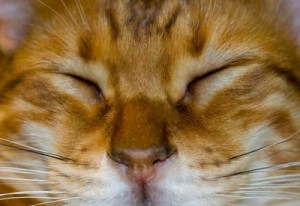
More tests, more bills and by this point I was administering subcutaneous fluids twice a day, force feeding three times and day and wrestling pills down his throat twice a day. It’s a wonder he’s still speaking to me. How do you spell stress?
The point I’m making here is that all my expectations were dashed and so I had to totally regroup and refocus myself from a week that I had booked off from work to a week working and caring for sick cats (yes, Ben’s brother got the same bug). It was jarring. It was unpleasant not least because I had a sick cat, but also because I wasn’t doing what my mind had expected. I raise this because it brought home something important writers need to think about, which is reader expectation.
Reader expectation is what the reader is expecting to experience in a book. For instance, if J.R.R. Tolkien had written a shoot-‘em-up Science Fiction book as a follow-up to the Lord of the Rings, think about how disappointed the Lord of the Rings fan would have been when they bought the book. Same goes for the reader who picks up a book that has a cover and blurb that looks like a suspense story, but when they get reading they find it’s women’s fiction. Or the reader whose book spends an immense amount of time early on lovingly describing the gun the hero owns, but by the end of the book the gun has never been used or even appeared in the story again. Each of these authors has violated reader expectations.

A few days ago I was talking with a writer friend of mine. He was bummed out because his editor at a New York publisher had turned down book two of his two book contract and my friend couldn’t understand what that had happened. In discussion with the writer he advised that book one was a lavish fantasy involving the Jewish kabala. Book two was a comedic superhero novel. Anyone see a problem here? Apparently his editor did, because the publishing house had ‘bought’ my friend as an author of lavish Jewish fantasies, but his second novel failed to deliver this in every respect. The publishing house likely turned the book down out of concern for reader expectations. Basically my writer friend was asking to his readers to give up the expectations he had created through his first book and start all over again. I suggest that readers don’t like to do this anymore than I wanted to give up my week in Oregon.
In all of these cases the author failed to meet reader expectations and as a result the reader would have as dissatisfying an experience as I have had this week. Yes, the book(s) may still have been well written. My writer friends second book was undoubtedly wonderful (he’s a great writer), but it wasn’t what the publisher was banking on the reader wanting. He should have written another Jewish fantasy. He should have written under a different name for the superhero novel. Not that all our books have to be the same, but if we want to establish a career as a writer, we need to establish a brand. We might have several brands for different kinds of books written under different names. For instance my romance novels are under Karen L. McKee, while my fantasy/SF is written under Karen L. Abrahamson. It helps reader know what they are getting and this helps meet reader expectation.
So as writers we need to make sure that we don’t put our readers through the experience I’ve had this week. With two sick cats, I definitely didn’t get what I’d thought I bought when I booked the week off.
(and in case you were interested, the boys are both on the mend.
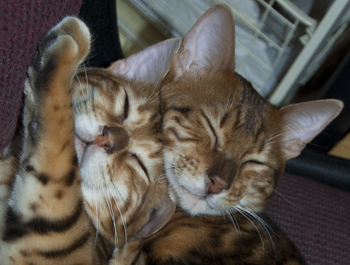
Maps, Dreams and a Road Trip to Port Townsend

This past week a good friend and I embarked on one of those memorable institutions of Americana (or Canadiana—we are both Canucks)—the road trip. Not that it was one of those great ventures across the continent like so many novelists have captured. No this was a small road trip—actually more of a mini or micro-mini road trip all the way from Vancouver, Canada, to Port Townsend, Washington. Why did we go? Just like any other road trip, we went because it was there and because it was a point on a map that we hadn’t visited before.
Road trips seem like an important part of our North American culture. Maybe it’s our love of the automobile or maybe it’s the distances, but I know people who think nothing of hopping in their car and driving for days on end just to visit a friend, or to be able to stand on a point of land and look out at the Pacific Ocean. Yes, they might have been able to fly to the location quicker and more conveniently, but the road trip makes the process of getting there just as important as the arrival.
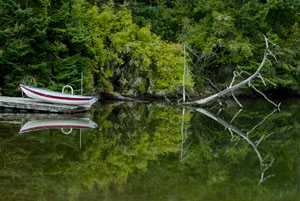
My first road trips were in the back of my parents’ black Ford sedan, travelling across the continent not once, not twice, but at least five or six times because my dad was posted at a military base on one side of the continent and ‘home’ was always on the other side. Dad would drive and mom would ride shot gun and play navigator with the road map. For summer holidays we took road trips from the Pacific Northwest to Utah and California or Montana. Those were memorable trips and brought home at a young age, just how huge the continent was and the diversity of all the places there were to visit and all the different people you could meet along the way. We’d play games of spotting license plates from other places, and I’d count the horses I saw in the fields.
My first independent road trip was right out of high school when, with two friends, we drove to Mexico and back in a Ford van affectionately known as the Dorf. At eighteen it was adventure and an announcement of independence to the world. It took all three of us to places we’d never been before, following the map down the coast and back up I5. We got lost travelling at night playing leapfrog with the long haul truckers and then turning off when exhaustion made us look for a place to sleep in the Van. We got chased off by locals and scared by someone prowling around us and ended up taking turns and travelling right straight through from central California to home in one sitting following the long straight road laid out on the map for us.

What is it about the road trip that draws most of us to such a trip at some point in our lives? Is it simply the love for the automobile and the feel of power that wheels us away from the moorings of our life, or is the call to adventure that dreamers dream of and writers write about? Or is it the vestigial need to explore that remains like a tailbone in our psyche?
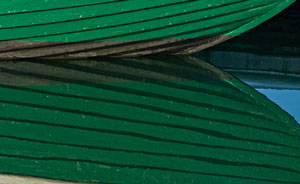
Either way, my friend and I explored the heritage byways and backwaters of Whidbey Island before climbing on a ferry and crossing to Port Townsend. We followed the city map of heritage houses and explored the town before heading on our way again looking for opportunities to fall of the map before climbing back on again to eventually find our way home. At one point our trusty map failed us and it took a kind trucker and his GPS to put us straight again, but that’s the nice thing about road trips: you meet nice people most of the time. When we got home my friend and I were both ready for another, longer trip. We’re already scanning the maps for new places we haven’t seen. Any recommendations?
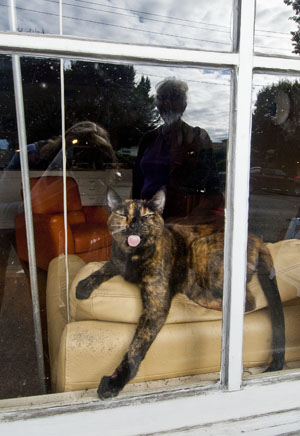
The Lure of Venturing into the Unknown

The other day I was reminded of something that seems intrinsic to human beings—the need to go where no one has gone before, to discover and map and mark our presence upon the world whether it be by having a place named after us, or by hammering a flag into a mountain top. What reminded me of this phenomenon, was the unending effort of one of my cats.
You see, in my house I have a cupboard that holds my washer and dryer. Above that cupboard is a nine-foot high display ledge that holds three large terra cotta pots and an antique Burmese carriage carving safely out of the way of the carnage of scampering little cat hooves. My cat, Ben, has known of the shelf. In my arms when we walked past he always strained upwards like a person wishing for wings, but there was no way up.
Or so I thought. I underestimated the lure of adventure into unknown worlds, and the too-keen intelligence in my cat when it comes to reaching the Promised Land. You see, unbeknownst to me, Ben has secretly been in training.
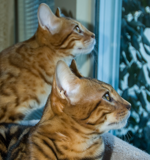
Over the past few years he has taken to leaping to the tops of doors and balancing. Over the past few months his training shifted to opening every bifold door in the house, including the one to the washer and dryer. Then, recently, he trained at climbing, and took it upon himself to open my linen closet, climb up the shelves and then climb out the small little ‘V’ of open space at the top of the bifold closet doors. Once there, he’d balance. Shocked the heck out of me the first time I walked in and didn’t see him until he leapt down in front of me.
I’m sure you can see where this is going.
After years of training, much like a mountain climber trains before attempting Mount Everest, or those surveyors before tackling mapping a mountain range, while I was away at Disney World, Ben tackled his adventure.
The result? One smashed terra cotta pot and a cat with a very big smile on his face.
Since I’ve been home he has shown me how he climbs his mountain. Then he sits on the ledge far above my head and meows his accomplishment—until I grab a chair and haul him down. He seems satisfied with himself and content. When I carry him past the ledge he no longer looks up at the Promised Land. After all, he’s been there, and until I can figure out how to lock the door he can get up there any time he wants
So I guess, just like the explorers of old, I’m going to have to find a way to commemorate what he’s accomplished. Guess I’ll dub his ‘Everest’ ‘Benares’ Ledge’.
And cat-proof the remaining terra cotta pots, of course.
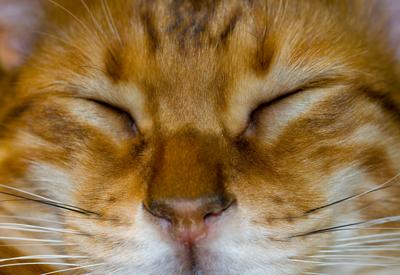
Free Fiction
 Free Fiction Wednesday takes you into the heated swamps of Bangladesh with a short story, A Tiger’s Heart Wrapp’d in a Woman’s Hide. To venture into amid the mangroves, click here.
Free Fiction Wednesday takes you into the heated swamps of Bangladesh with a short story, A Tiger’s Heart Wrapp’d in a Woman’s Hide. To venture into amid the mangroves, click here.
The Place That Wasn’t There
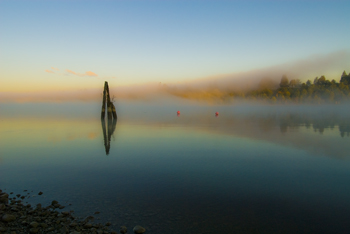
I fell off the map this week – at least that was what it felt like when I learned that I’d been removed from the intercom list at my townhouse complex. It doesn’t sound like much – a simple omission when they were doing the complex list – but think about it. To the outside world I no longer existed in this location. I inhabited an invisible place outside of the normal world that happened to be located between the house number below me and the one above – much like the safe house in Harry Potter but without the overt magic. I was gone, and so was my home and all the mementos I’ve collected from across the world. And of course my cats.
I’ve experienced something similar before, when I worked in the interior of British Columbia in a small town that was a long ways away from anywhere. When my agency’s reporting relationship shifted from one region to another, all the paperwork connections seemed to disappear and no one contacted us – it was actually quite a nice change. But it was also like we inhabited some huge fog bank that filled a space in the center of the province that no one knew existed. Our own personal twilight zone.
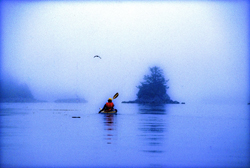
Such phenomena isn’t only in my imagination. Cartographers have been erasing or omitting bits of the landscape from their maps since before Prince Henry, when choice harbors and trade routes were secrets worth killing for. In order to gain a truer picture of the world, it became common practice for Kings to confiscate the log books and charts of each ship that came to harbor in order to copy them down before the sailors took ship again.
During the time of the early Portuguese spice trade, the location of, the Moluccas, the five tiny islands that were the sole source of nutmeg, mace and cloves, were closely guarded secrets. True maps of the eastern Indian Ocean were treated as highly classified documents (and few exist today) due to the possibility that the Portuguese were violating a Papal bull which gave the Spanish sovereignty over all lands west of a longitudinal line running 100 leagues west of the Cape Verde Islands (in the Atlantic).
During the age of exploration and when Spain, France and England were vying for the Americas and the Northwest Passage, maps were made that purposely misrepresented the landscape in case they fell into (and sometimes purposely intended for) the enemies’ hands. Such maps were intended to deter exploration by competitor nations because the harbor, the river, the inhabitable, productive land wasn’t there.

Even today we see maps shift reality so that places exist differently than what you would find ‘if you were on the ground’. Road maps often include streets that are planned, but have never been built, or don’t describe that the street crossing that looks so direct on the map, can’t be made. A recent internet report showed that Chinese government maps of cities often change the position of major streets. Why? For military purposes. The government has apparently fallen back on the ancient practice of redrawing reality to stop potential invasion or intelligence gathering.
Happily, I’ve been replaced on the list of existing residents of my complex and so my home and I have been returned to reality. There is no longer a fog where my house once stood and my cats and I are all okay.
Who Are These Readers of Which You Speak? Blogging as Social Marketing

I’m going to end this marketing series (well if something else comes up, I’ll add it later, but next week I’m going to start blogging about my writing) talking about blogging. Not that I’m an expert by any means, but blogging seemed like the kind of social marketing I could control and manage, so I’ve done regular posts since January. Those posts were about prepping for my trip to Peru, about my wild and wooly Bengal cats, about my trip to Peru and then about marketing. All of them have been fun to write and hopefully you’ve enjoyed them, too, but I wanted to spend this post talking about how blogging has worked in terms of social marketing and what I’ve learned over the past eight months.
Has blogging lead to an increase in traffic to my site? Resoundingly, yes, when I check the analytics. However whether it was the right kind of traffic, I can’t say. I’ve certainly been spammed more. I’ve also had more comments, especially during the Branding Your Book blog, and during my trip to Peru. But the latter came with pretty pictures, so I’m putting the traffic down to that and the fact that maybe people were interested in my misadventures in Peru.
I suppose any increase in traffic to your website is a good thing as long as your titles are front and centre on your website, but I’ve been doing a lot of thinking lately about who am I actually drawing to the website with my blog. I mean who are these people who come and check out what I have to say?
I can’t be sure who was reading my blog when I was prepping for Peru and when I was travelling there. Some, I know, were friends and acquaintances, or friends of friends. All good, because blogging is a social enterprise. But who has been reading my posts about marketing? I’d guess, from who made comments, most likely other writers. Are these my target audience? Well, for a marketing blog, I’d say yes. But this raises three thorny questions I guess I should have thought of way back when:
1. Why am I blogging?
2. Why do I have a website? and
3. Who do I want to read my blogs?
I’ll come clean here: I had never really given thought to having a website or blog or any other marketing matter until it became clear that, before acquiring a manuscript, New York editors were checking out new authors to see if they had an online presence. It was okay if you had a website. It was better if you had a blog and a following on twitter and facebook. With the advent of indie publishing, this presence became even more important as a means to draw people in so that they would consider your books. The website was the most important place to promote your books and writing. So my question is, if my website and blog are to promote my writing, are they attracting my intended audience of potential readers?
The answer? Maybe. Maybe a potential reader might be interested in book marketing, but I think not so much.
What might a draw a potential book reader in?
Here’s my possible list:
1. Topics of personal interest to them. A Y.A. reader of books like Twilight might be interested in blogs about teen romance. They might also be interested in books that take place in a high school, or books about loner characters because, let’s face it, we all feel alone in high school. Interest might also be there for blogs about the challenge of being strong and independent when social pressures push young people to be anything else.
2. Other topics that interest readers – Again, using Y.A. readers as an example, issues of social justice and fairness, possibly environmental issues, issues of social exclusion, dealing with boy/girl-trouble etc. This list may, or may not, be different for Fantasy readers. Blogs on characters who are loners and who have special powers. Blogs on magic systems or magical creatures might have equal appeal.
3. Topics related to your writing – While any of the above topics can be related to your novels, topics related to your writing would focus on matters that relate to how you write. For example, how you built the world you are writing in; writing about the research process and interesting information you come across; writing about your writing process and challenges.
4. Topics relating specifically to your books – this would include writing about the locales where your books take place; ideas that led to the book, or ideas that were considered and discarded; or more information about your characters.
5. Personal information – like my blogs about my cats, readers enjoy knowing more about you and what makes you tick.
So my blogs over the next while are going to focus on what I think readers might enjoy and not totally on my fellow writers. That said, I have to say one of the more inspirational blogs to me is one written by fellow author Matt Buchman who talks (inspirationally) about where he draws his inspiration from. His blogs are great reads for anyone, reader or writer.
So as a reader, what topics would you like to see blogs about? As a writer, what do you like to blog about?
Free Fiction
With a Llama on Her Head: With Blisters on Her Feet
Day two Lima and I have so many blisters I cannot believe it. This while wearing sandals I wore all through Cambodia with nary a problem. I don’t understand this. I have blisters on the balls of my feet and on the callus edges of my heels. I mean what’s up with that? I thought calluses were supposed to protect you from blisters. Sigh.
Anyway, I’ve walked lots and seen some, so let me regale you with it.
Lima sits on ocean cliffs in a spot Pizarro apparently chose after he was finished killing the last Inca King and Stealing his gold. Notthat those things are related or anything, but Lima wasn’t his first pick for the capital, nor was it the second, but it was the one that ‘took’, apparently because of the wide, flat-bottomed valley it sits in. Not that I’d know if we’re in a wide valley or not. I still haven’t seen mountains.
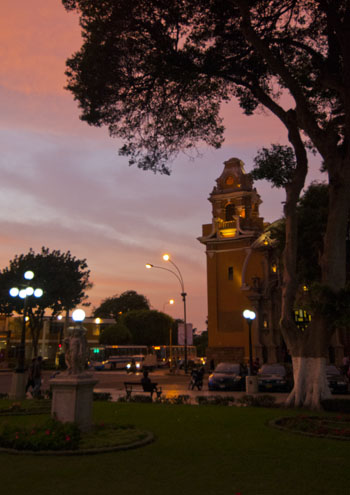
The darn fog has barely lifted both days, but given the little I know about Lima it seems to be a place of broad, clean streets and friendly people. And pets. Limans (is that the right word) seem pretty devoted to their pets. My first day here I walked down to the sea cliffs and along the promenade that reminds me so much of the Vancouver Seawall. There were people jogging, people strolling and people making out under the statue of the lovers (that I could barely see for the fog). And there were dogs. Small fluffy ones, British bulldogs, German Shepards and even (thank goodness) a pair of Peruvian Hairless dogs that look a lot like a stockier Doberman Pincher, but with dark, almost hairless bodies and some even have bonded air on their foreheads that make them look like they’re wearing an incredibly bad toupee.
And there are cats. Yes, I managed to find them and I fell in love with Miraflores (the suburb I’m staying in). You see I wandered down to Parque Kennedy and there, in between the Municipal hall and the Cathedral I wandered into a wonderland of cats. There were black ones and calicoes and torties and every other color cats come in, and in every size and shape as well. Right under the sign that even I could understand that said “Don’t Abandon Your Cats Here”. Sure. Like that’s happening. Children play with and pat the kittens. The cats loll in the sun. Some kind soul has put out cat beds and plush cat houses so that it looks like there are ‘heaps o’ cats’ there. There’s even an older guardian of the cats keeping watch. I mean how can you not love this town?

So I ogled the cats and visited a ruin site in the City, and then caught a taxi to Barranco, the next suburb over, to see the old neighborhoods and the Puente de los Suspiros – the Bridge of Sighs. Unlike the bridge in Venice, this is nothing to do with people being dragged off to prison. Instead, this is a bridge dedicated to lovers. It is commemorated in romantic songs. All around it are quaint restaurants with little twosome tables set to watch the sun go down. There are Latin guitar players to serenade you, and flower sellers, selling perfect red roses, and to pay for all this are the lovers.
Let me tell you I felt out of place. EVERYWHERE you looked people were in love (or lust as the case may be) I saw more lip-locks than I could count. But it was kind of fitting given the sun finally came out in time to set.
I had dinner in Barranco, a Peruvian specialty of Anticuchos – brochettes of tender slabs of beef heart – and large white-kernel corn, with a drink of Chica Morades – a sweet drink made from purple corn. Lovely.
So today I went into central Lima, to the Plaza des Armas. I visited the cloisters of two monasteries, including their catacombs. Stepped into too many churches and watched the Changing of the Guard at the Presidential Palace. This involved a red-serge dressed marching band, and ranks of young soldiers with flashing bayonets and high kicks.
One thing that is very clear in Lima, there are security people everywhere. Outside banks and guarding parking lots, outside the palace the gates are barred and there are soldiers in large military vehicles with tactfully-covered submachine guns (who will grin at you as they talk on their cell phone). After the changing of the guard I decided to visit Plaza San Martin to see the statue of a mounted San Martin, the liberator of Peru. He was large and grand and the ubiquitous pigeons seemed to avoid him, but just under his horse’s chin was a lovely statue of Patria, the symbolic mother of Peru. She is supposed to wear a crown of flames, but something apparently happened in the translated instructions from Spain where llama means flame. To the statue makers it meant something else and so there is a lovely little llama on her head.
So while I sit here feeling sorry for myself about my sore feet, I remind myself of Patria. Heck, blisters will heal.
She has to wear a llama forever.
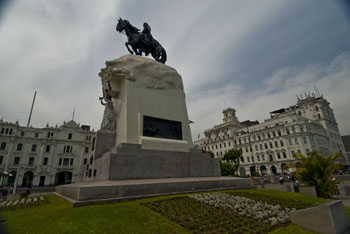
Saying Goodbye – guilt and cats and manuscripts
There is nothing worse than having to walk out the door with two little feline faces gazing up at you with that “you’re not going to leeeeeaaaave us, are you?” look on their faces. Worse than kids, I think, because kids you can explain it to. Cats, however, they don’t get it and regardless of what anyone says, I know they pine when I’m not there.

No, this isn’t me anthropomorphizing my animals. My regular cat sitter has spotted the signs numerous times. I’m their pride leader – the alpha female—and when I’m gone, they go off their food. They start tearing things up when they never would before. Or they come rushing to the door and throw themselves at my cat sitter’s feet for pats, they are so starved for human attention.
Knowing this has made it very hard to travel without them. These cats actually travel very well and I swear they like to show off on their leashes for new people. When I’m forced to leave them at home for a business trip there’s always a guilty part of me that worries that I’m a bad pet owner. And of course I miss them and their warmth on my lap, Shiva acting like a mountain lion and peering down at me from atop the cupboards, and Ben chasing his tail every morning (he has yet to catch it). All the little rituals of catdom.
I’ve realized as I’m getting ready for this trip, that saying goodbye to my cats is a lot like saying goodbye to a manuscript. (Except, thank goodness, a manuscript doesn’t pine – does it?) For this length of time away I considered a variety of cat spas for the boys and I have to say there are some very nice ones, but it doesn’t matter the quality of the care, any cat spa is not their home and they won’t have the space to run that these two little bad boys need. As a result I managed to find a live-in house sitter. Making the choice to go this route is a lot like making decisions about whether to send a manuscript out to the world, or to self-publish.
With the traditional publishing route you need to assess your work for what kind of publisher might publish it. Consider what genre it is, but also consider whether it transcends a genre. For example, there are best sellers out there that are Science Fiction, but you won’t see them shelved in a science fiction section of a book store, because they are ‘bigger ‘ than a science fiction novel. An example is Jurassic Park. Harry Potter went far beyond Fantasy and the Thornbirds (gag) went beyond romance to family saga. For my cats, I knew they were ‘bigger’ than most cats –maybe not in size, but definitely in attitude and activity level.
You need to assess your manuscript to decide what publishers to send your work to, just as I had to assess whether a cat boarding situation might serve Ben and Shiva. Then you need to research your publishers to know whether they publish your kind of work. You need to identify an editor you think might be your target audience. A helpful place for this is Publisher’s lunch, or by listening to editor presentations, or reading their blogs. Then, or course, you need to edit and package your manuscript and get it out the door. I often find that this work – the business side of writing—is the toughest part of the whole ride, and I have to specifically schedule time to do it, or it won’t get done.
Self publishing is more like what I’ve done to arrange a home stay for my cats. It all falls to you to determine your product – cover, blurbs, and how the manuscript looks – just as I had to arrange exactly what I could live with for the boys. For the cats, this involved interviews and the cat sitter spending time with the boys.
For self-publishing, this takes patience and willingness to learn a whole new skill set and when you have the manuscript ready to go, it involves a whole new level of anxiety because although you’ve presumably done due diligence to make sure you’re your manuscript is decent and clean of mistakes, you are putting the work out there without having an editor tell you it’s perfect.
So you put it out there and the first time someone comes back to you to tell you it’s not perfect, you cringe. Just like a cringe when I learn the boys were lonely when I was gone. But in both cases I did what was right. I had to go, whether for business or to refill my soul with travel, and the manuscript –whether self published or published in the traditional sense—had to go too, because we’re writers, right?
And what we write is meant to be read.
